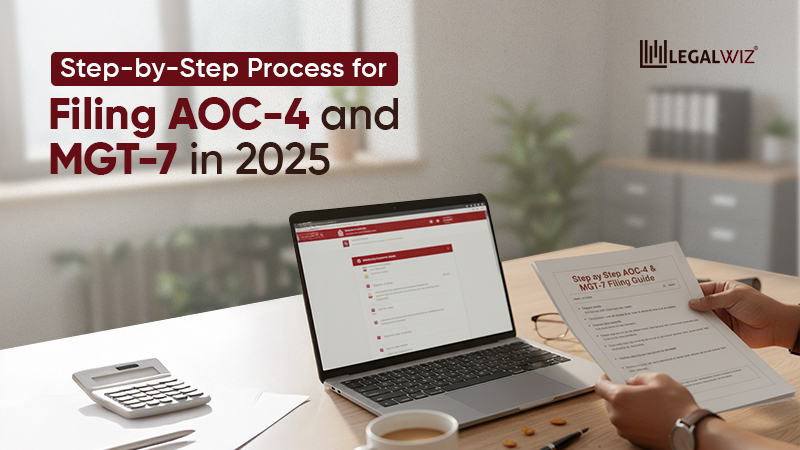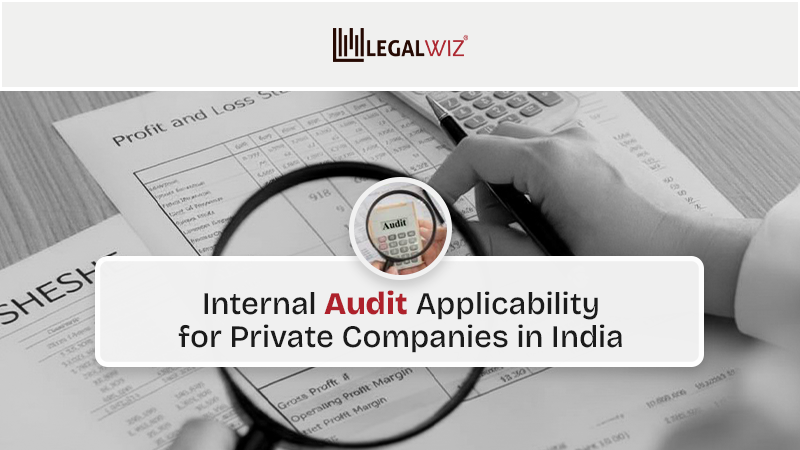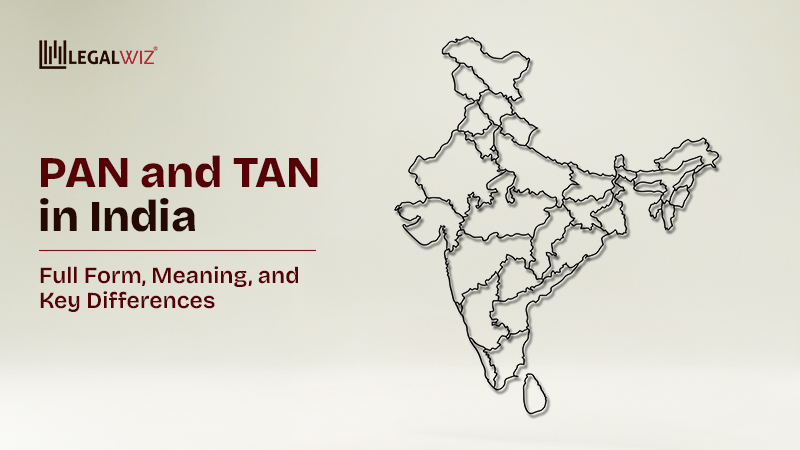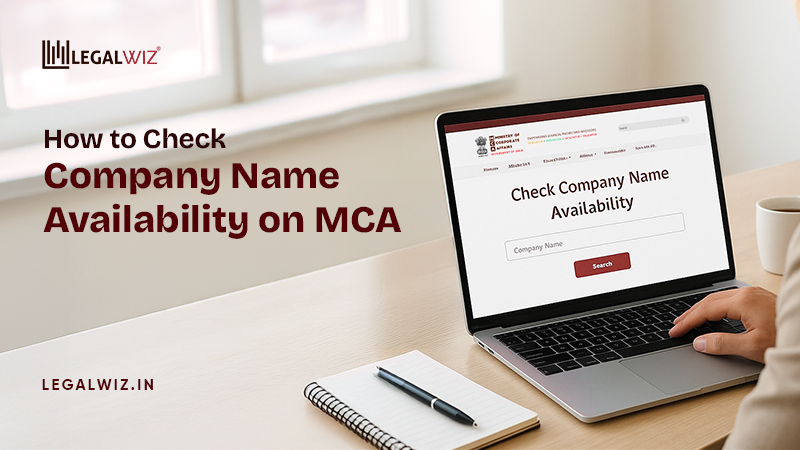Step-By-Step Process For Filing AOC-4 And MGT-7 In 2025
Did you know that over 10 lakh Private Limited Companies operate in India today? Yet, a large number struggle to manage annual compliance for Private Limited Company effectively. Deadlines get missed. Forms pile up. And soon, the risk of penalties or inactive status becomes real.
Compliance isn’t just paperwork. It’s what keeps your company credible, transparent, and legally sound. Among all the annual requirements, two forms stand out. AOC-4, which records your financial statements. And MGT-7, which captures your company’s annual return.
These filings aren’t optional. They’re the backbone of your company’s legal health. Staying compliant starts with filing your annual compliance for your PLC efficiently.
In this guide, we’ll walk you through everything about AOC-4 filing and MGT-7 filing for 2025. Step by step. Simple. Clear. Without the heavy legal jargon.
What are AOC-4 and MGT-7, and why do they matter
Discussing ROC compliance, two forms usually come into view: AOC-4 and MGT-7. They are compulsory, and each of them serves a unique purpose.
AOC-4 (Financial Statements Filing)
- Under the Companies Act, 2013, every Private Limited Company must file its audited financial statements with the Registrar of Companies.
- These financial statements will include the following:
- Balance Sheet,
- Profit and Loss Account,
- Cash Flow Statement (If Applicable),
- Auditor’s Report,
- Board’s Report And Related Annexures (For instance, CSR Report Or Subsidiary Statements).
- Purpose: Confirm that financial records are transparent. The ROC (and stakeholders) need to see that accounts are prepared correctly, audited, and as per law.
MGT-7 (Annual Return Filing)
- This form includes non-financial details like who holds shares or debentures, information about directors and key managerial staff, records of meetings, and any changes that happened during the year, if there were any. etc.
- It reflects governance and structural changes, and gives ROC a full picture of who controls the company and how the company is run.
| AOC-4 and MGT-7 cover the basics, but there’s more your Pvt Ltd company needs to stay fully compliant with. See the full guide here: Compliance Requirements for Pvt Ltd Company in India |
Why these filings are essential
- Filing AOC-4 and MGT-7 keeps your company in good standing with the ROC. It’s not optional. It’s the law.
- Missing deadlines or filing with errors can cost you penalties, late fees, and even legal issues.
- These filings are also proof of your company’s health. Investors, banks, and partners often check them before doing business with you.
- They are publicly available records, which means anyone can see how transparent and accountable your company really is.
Who Needs to File AOC-4 and MGT-7 in 2025
Every registered company must file these forms under the Companies Act, 2013.
AOC-4:
- All Companies
Every company registered under the Companies Act, 2013, including a Private Limited Company, must file its annual financial statements through AOC-4. This applies even if no business was carried out during the year. - NBFCs under Indian Accounting Standards (Ind AS)
Non-Banking Financial Companies (NBFCs) following Indian Accounting Standards (Ind AS) must use:- AOC-4 NBFC (Ind AS) for standalone financials
- AOC-4 CFS NBFC (Ind AS) for consolidated financials (if applicable)
- Companies with CSR Obligations
- Companies falling under Section 135(1) (CSR provisions) must also file Form CSR-2 as part of AOC-4, AOC-4 XBRL, or AOC-4 NBFC (Ind AS).
- Companies Covered Under XBRL Rules
The following must be filed in AOC-4 XBRL format:- Listed companies and their Indian subsidiaries
- Companies with paid-up capital of ₹5 crore or more
- Companies with a turnover of ₹100 crore or more
- Companies preparing financials under Ind AS
MGT-7:
- All Companies
Every registered company in India, irrespective of whether it is a private or public, regardless of size or activity, must file MGT-7 annually with the ROC. - Private Companies (Other than Small/OPCs)
All Private Limited Companies that don’t fall under the “small company” or OPC category are required to file MGT-7. - Small Companies and OPCs
For OPCs and small companies, MCA introduced Form MGT-7A in 2021. It is a simpler version of the annual return. It covers key details like finances, shareholders, and directors. Filing it is mandatory but easier than MGT-7.
| Want to understand how AOC-4 filing works in general? Here’s a quick guide that covers due dates, fees, filing steps, and key compliance details. Read all about it here Form AOC-4 Filing – Due Date, Fees & Compliance Guide [FY 2024-25] |
Due Dates for AOC-4 and MGT-7 in 2025
Heads up, Private Limited Company owners! For FY 2024‑25, the AOC‑4 and MGT‑7 deadlines are set around your AGM. File on time, and your compliance stays squeaky clean. Miss them, and penalties come knocking, so mark your calendars and stay ahead.
Here’s a quick look at the key deadlines for FY 2024-25:
| Compliance | Deadline |
| Conducting Annual General Meeting (AGM) | By 30th September 2025 |
| AOC-4 Filing | Within 30 days of AGM, i.e., 30th October 2025 |
| MGT-7 Filing | Within 60 days of AGM, i.e., 29th November 2025 |
Note: The due date for filing Form AOC-4 for FY 2024-25 has been extended to December 31, 2025, without any additional fees.
Documents & Information Required for Filing AOC-4 and MGT-7
Having complete and verified documents is key to seamless ROC compliance.
For AOC-4:
- Audited financial statements (Balance Sheet, P&L, Cash Flow if applicable)
- Board’s Report
- Auditor’s Report
- Details of Subsidiaries (if applicable)
- Corporate Social Responsibility (CSR) Report (if applicable)
For MGT-7:
- List of shareholders and debenture holders
- Details of board meetings held during the year
- Any changes in directors
- Share transfers, if any
Pro Tip: Cross-check all information with your internal records and auditor’s statements to reduce errors in filing.
Step-by-Step Filing Process on MCA Portal
Filing AOC-4 and MGT-7 online is straightforward if you follow these steps carefully:
Filing Form AOC‑4
Step 1: Log in to MCA Portal
Go to www.mca.gov.in and sign in. No account? Create one—it’s quick.
Step 2: Pick the right form
Open Forms and choose AOC‑4 for your company type—standard, XBRL, Ind AS, or NBFC.
Step 3: Add company details
Enter company data, financials, auditor information, and other required fields. Keep source files handy.
Step 4: Upload required attachments
Attach balance sheet, profit & loss, board report, auditor’s report, and annexures. Missing documents cause rejections.
Step 5: Apply digital signature
Use a valid Digital Signature Certificate (DSC) of an authorised director or professional to sign digitally. No printing needed.
Step 6: Submit and pay
Upload the form, complete the payment, and confirm submission. Check for validation errors first.
Step 7: Record the acknowledgement
Save the SRN (Service Request Number). Keep copies of the filed form and attachments for records.
Filing Form MGT‑7
Step 1: Gather Documents
Collect all information and verify with statutory registers. Prepare the shareholders or debenture holders list on company letterhead as of 31st March.
Step 2: Fill the Form on MCA Portal
Log in to MCA portal and download Form MGT-7. Fill in required details. Attach the shareholder list and mandatory documents. Director must digitally sign using a valid DSC.
Step 3: Submit and Pay Fees
Upload the completed form and pay the filing fee online. Fees depend on authorised capital. Note the SRN generated—it’s your proof of filing.
Step 4: Retain Records
Keep copies of the filed form, attachments, and acknowledgment. ROC processes submissions in STP (Straight-to-process) mode. Proper records help in audits and future compliance.
Filing Fees for Form AOC-4 and MGT-7 (Based on Share Capital)
| Nominal Share Capital | AOC-4 Fee | MGT-7 Fee |
| Less than ₹1,00,000 | ₹200 | ₹200 |
| ₹1,00,000 – ₹4,99,999 | ₹300 | ₹300 |
| ₹5,00,000 – ₹24,99,999 | ₹400 | ₹400 |
| ₹25,00,000 – ₹99,99,999 | ₹500 | ₹500 |
| ₹1,00,00,000 and above | ₹600 | ₹600 |
| No share capital | ₹200 | ₹200 |
Late Fees for Form AOC-4 & MGT-7
1. Late Fees
If there’s a delay in filing your annual returns, balance sheet, or financial statements, the following late fees apply:
| Form | Period of Delay | Additional Fee Payable |
| AOC-4 | Beyond due date under Section 137(1) (filing after 30 days of AGM) | ₹100 per day |
| MGT-7 | Beyond due date (filing after 60 days of AGM) | ₹100 per day |
Pro Tip: Late filing increases costs and affects your company’s compliance record. Filing on time avoids extra charges and maintains credibility with investors, banks, and regulatory authorities.
Manage Your PLC’s Annual Compliance Smoothly with LegalWiz.in
Filing AOC-4 and MGT-7 isn’t just compliance. It’s how you keep your company credible and transparent.
Miss a deadline, and fines or legal risks can pile up. Investors and banks notice too.
The good news? Staying on top of filings doesn’t have to be stressful.
You can handle annual compliance for Private Limited Company smoothly with proper guidance. Everything from documents to ROC submission can be managed efficiently.
- Hassle-Free Compliance: From DSC setup to ROC filings, we take care of everything for you.
- Straightforward Pricing: Clear costs with no surprises.
- Seamless Filings: Annual returns, KYC, and tax requirements handled efficiently.
- Guidance You Can Trust: Experts available at every step to keep your PLC compliant and worry-free.
Simple, reliable, stress-free compliance — that’s LegalWiz.in.
Frequently Asked Questions
How do I know if my filing is successful?
After you submit AOC-4 or MGT-7, the MCA portal gives you an SRN (Service Request Number). This is your proof of filing. Keep it safe. You can use it to track your submission or for future reference.
Can AOC-4 and MGT-7 be filed together?
No, these are separate forms with different purposes and deadlines. However, preparing documents simultaneously makes the filing process easier.
Can a dormant or zero-activity Private Limited Company skip filing?
The law requires that all companies including those without current operations need to submit AOC-4 and MGT-7 forms to stay compliant with legal requirements and prevent fines.
Is AOC-4 filing different for small companies or OPCs?
Yes, but it’s still mandatory. All companies, including OPCs and small companies, must file their annual financials using Form AOC-4, even if there was no business activity during the year.

Avani Kagathara
Avani Kagathara brings order to legal chaos as a Content Writer at LegalWiz.in. Armed with an accounts and audits background, she has a knack for making complex legal topics feel less intimidating. Fair warning: she's equal parts thoughtful analyst and spontaneous free spirit.







